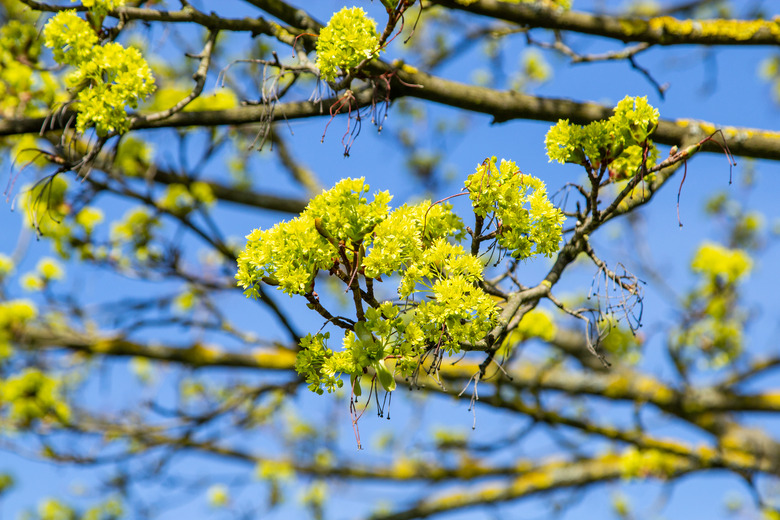Why Does Bark On A Maple Tree Turn Black?
We may receive a commission on purchases made from links.
Steganosporium ovatum cankers appear as a secondary infection on the maple tree. The fungus takes control of the tree when the tree suffers ongoing weakness brought on from maple tree decline. The fungal disease causes black fruiting structures to cover the tree's bark. The black pustules eventually grow together as the fungus spreads and forms a solid black layer over the bark's surface.
Causes of Maple Tree Decline
Causes of Maple Tree Decline
Maple tree decline occurs on maples grown on forestland and in urban settings. The disorder affects Norway maple (Acer platanoides), red maple (Acer rubrum) and sugar maple (Acer saccharum) varieties. In forestland, the maple tree becomes weakened from continuing defoliation caused by pests. Maple trees growing in an urban environment often weaken from urban pollution, construction around the tree and deicing salts. Commercial sugar maples become weakened by unremitting tapping. The weakened state of the tree allows the Steganosporium ovatum fungus to gain hold of the tree and eventually kill it.
Steganosporium Ovatum Prevention
Steganosporium Ovatum
Prevention
The only way to prevent Steganosporium ovatum is to maintain the maple tree's health. Avoid planting the maple tree too deep. Plant the tree shallowly and apply 2 to 4 inches of mulch around the maple tree's root system to help stop it from suffering injury from overcultivation. Avoid using deicing salts near the tree or plant the tree away from the roadway to protect if from deicing roadway spray. Wrap the young maple tree's trunk with burlap to protect it during the winter sun months from winter scald.
Caring for an Infected Maple
Caring for an Infected Maple
If a maple tree begins to show signs it may be suffering from decline, do not allow it to suffer from excessive drought. Consider fertilizing it with a well-balanced fertilizer. Push the soil back from the tree's root collar to help prevent soil pathogens from infecting the tree and further weakening it. A tree that suffers root girdling will require professional removal of the roots to help improve its health and regain its strength. Once a maple tree begins to suffer from Steganosporium ovatum there is no approved treatment method to help.
Outcome of Maple Tree Infections
Outcome of Maple Tree Infections
Steganosporium ovatum occurs on a maple tree suffering from serious decline. The fungus begins on the tree's twigs that have already begun to die. Once the fungus takes hold of the twig, it usually dies rapidly, and the tree's decline accelerates, according to the U.S. Forest Service. The maple tree may begin to shows signs of suffering from several fungal infections at once. Root rot (Armillaria mellea) and branch canker (Nectria cinnabarina) usually occur with the Steganosporium ovatum fungus.
